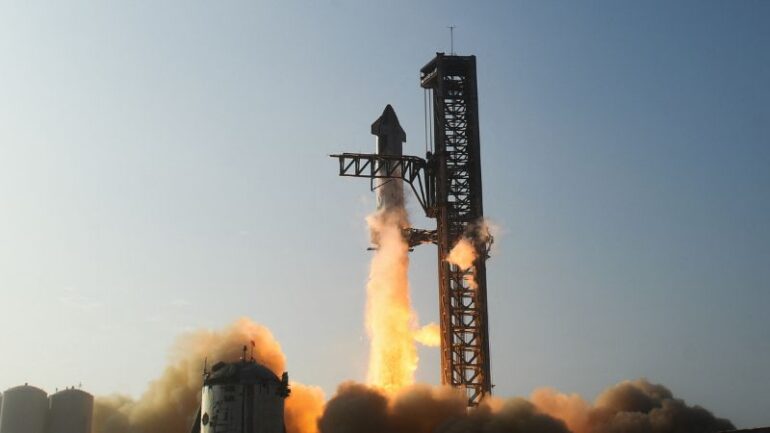Elon Musk’s SpaceX Starship rocket blasted off from the launch site in Cameron County, Texas, last month.
However, it blew up within minutes after making 39 kilometres into the atmosphere above Mexico.
On today’s episode of The Science Briefing, Dr Sophie Calabretto covered three science stories from last month that you might have missed, and one of them was Elon’s SpaceX rocket.
Tune into the full episode of Science Explained with host, Dr Sophie Calabretto to hear the full recap of this month’s discoveries.
“It travelled for about 4 minutes all up and hit speeds of more than 2,000 kilometres an hour before the scheduled separation of the first and booster stages,” Dr Calabretto said.
The Starship rocket is the largest and most powerful rocket ever built. After the failed attempt, SpaceX posted a Twitter and said: “As if the flight test was not exciting enough, Starship experienced a rapid unscheduled disassembly before stage separation.”
“They brought up this eventuality again and again before anything even happened. But rapid unscheduled disassembly, that’s just a fancy way to say it blew up here,” she said.
In the statement, SpaceX confirmed multiple engines had failed to fire after liftoff.
The uncrewed sub-orbital test marked the first “fully stacked” trial in which the Starship cruise vessel.
“It’s worth mentioning this was just a test rocket and the complete test intended for Starship to continue for another 100 kilometres into space before reentry,” she added.
Several other super heavy rockets are in development, and Musk says the next flight test is expected in the coming months.
Introducing The Science Briefing: a podcast about the science of everything and your new go-to podcast for your snapshot of science news. Hosted by Dr Sophie Calabretto and featuring journalists from Cosmos Magazine.
